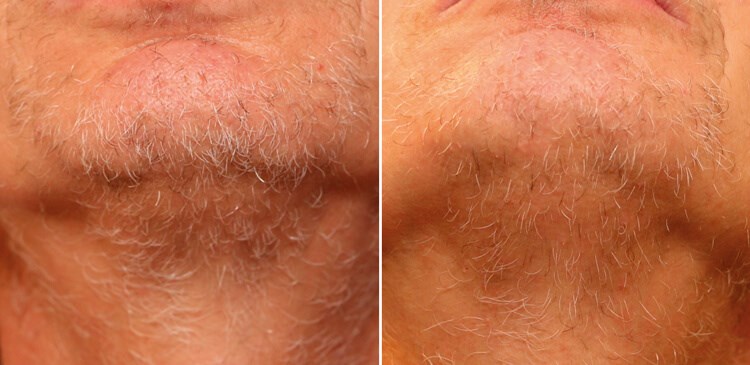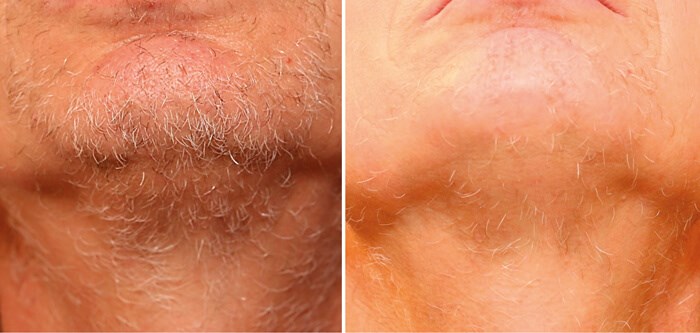Variable square pulse (VSP) Nd:YAG laser devices are ideally positioned among all available laser sources for hair removal. This is due to the fact that the Nd:YAG wavelength (1064nm) penetrates deeply into the skin. It is strongly absorbed in melanin as well as in the haemoglobin present in the vessels surrounding the hair follicle.
In addition, when coupled with air cooling and scanner technology, VSP Nd:YAG devices provide the best possibilities to adjust treatment parameters to fit individual cases, from thick to velus hair and from dark to light hair. They provide optimised treatment efficacy while protecting the epidermis from unnecessary damage.
The procedure
For hair removal I use the Nd:YAG Fotona FRAC3® mode with pulse durations from 0.1-1.6ms, as it produces a self-induced 3D fractional treatment effect that improves safety, efficacy and patient comfort in laser hair-removal procedures. Short pulses are effective for small targets such as shaved hair follicles, while ensuring the safety of the epidermis. A shaved hair follicle is very small in comparison to the cylindrical volume of epidermis through which the laser beam passes. Considering the testosterone replacement therapy (TRT) of a hair follicle is around 1ms, a short pulse between 0.6 and 1.6ms and a fluence between 25 and 50 J/cm2 is perfectly adapted to its selective destruction. At the same time, there settings do not put the epidermis at risk as the epidermis is a much larger target than a hair follicle and would require significantly higher settings to overheat.

After six sessions with six-week intervals.

After 12 sessions with six-week intervals.
Technique for lighter hair
This setting is also extremely effective for removal of lighter hair. I have developed a special technique for removal of red and light-to-white hair, which combines the plucking of hair immediately prior to the laser procedure. Plucking hair leads to the bleeding of the hair pores, as hair follicles are surrounded by a dense network of vessels that irrigate them. As the Nd:YAG wavelength is absorbed in haemoglobin, the laser beam is able to heat the blood droplet that accumulates in the hair pore. Through this action, the hair stem cells that remain in the hair pore after plucking are heated, in the same way that the melanin-rich follicle heats these cells. However, as Nd:YAG absorption in haemoglobin is lower than in melanin, the laser settings must be higher to heat the heamoglobin than the melanin. A pulse duration of 1ms and a fluence of 55J/cm2 have been found to be effective in obtaining a satisfactory reduction of hair with a low content of eumelanin.
Declaration of competing interests: None declared.
COMMENTS ARE WELCOME





